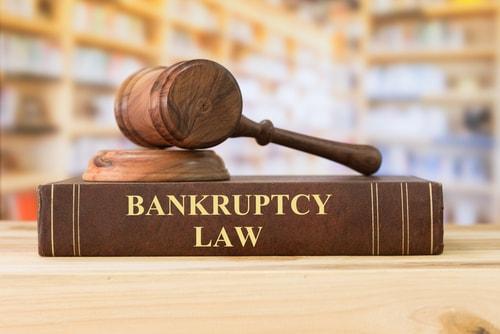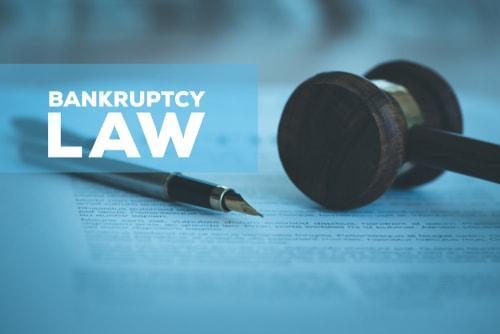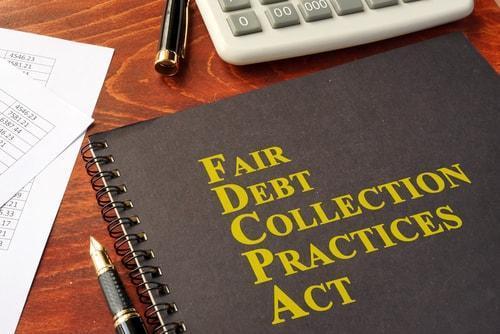Recent Blog Posts
What Are the Laws for Filing Multiple Bankruptcies?
 Most Americans have some sort of debt, with one of the most common forms of debt being credit card debt. Most of the time, debt is manageable if you are able to budget your money, but sometimes life happens and debt can become overwhelming. In cases such as those, bankruptcy is often your best option. Filing for bankruptcy can allow you to manage your debt in affordable payments or even discharge your debt, allowing you to wipe your slate clean.
Most Americans have some sort of debt, with one of the most common forms of debt being credit card debt. Most of the time, debt is manageable if you are able to budget your money, but sometimes life happens and debt can become overwhelming. In cases such as those, bankruptcy is often your best option. Filing for bankruptcy can allow you to manage your debt in affordable payments or even discharge your debt, allowing you to wipe your slate clean.
Unfortunately, sometimes your first bankruptcy is not your last bankruptcy. If you find yourself drowning in unmanageable debt again, you may wonder if it is possible to file for bankruptcy again. Technically, the answer is yes, but there are a few stipulations you should know about.
Filing for Bankruptcy More Than Once
You can file for bankruptcy as many times as you want to file. There are no rules about how many times you can file for bankruptcy, but there are rules as to how often you can receive a discharge of your debs. The time between discharges is based on the type of bankruptcy you filed before, whether or not you received a discharge in that bankruptcy and the type of bankruptcy you are trying to file. The waiting periods between bankruptcy discharges are as follows:
Bankruptcy Can Remove a Judgment Lien
Bankruptcy can, in the right circumstances, remove a judgment lien from the title to your home. Here are the conditions for pulling this off.
The Problem, and the Bankruptcy Solution
Do you have a judgment lien on your home? If so, the debt on that judgment is secured by whatever equity you have in your home. The debt is encumbering the title to your home, eating up your equity.
A judgment lien on your home gives the creditor holding the judgment lien legal rights against your home.
Those lien rights, those property rights, are similar to the lien rights of a vehicle loan lender. The lender is a lienholder on the car’s title. If the vehicle owner doesn’t pay the vehicle loan, the lender can repossess the vehicle. Similarly, a judgment lien holder on your home can, under many circumstances, foreclose on your home. At the least it can force you to pay the debt when you sell or refinance your home.
Bankruptcy Stops a Property Tax Foreclosure
Bankruptcy can help if you’re behind on real estate taxes. Chapter 7 by getting rid of other debts, Chapter 13 by buying you lots more time.
Bankruptcy Stops a Property Tax Foreclosure
Filing either a Chapter 7 "straight bankruptcy" or a Chapter 13 "adjustment of debts" stops a foreclosure by your property tax authority.
Filing bankruptcy stops most forms of debt collection through the "automatic stay." In particular the automatic stay stops "any act to... enforce any lien against property of the [bankruptcy] estate" Section 362(a)(4) of the U.S. Bankruptcy Code. The bankruptcy "estate" includes all assets that you own when you file your bankruptcy case. It includes your home.
A tax authority’s foreclosure for property taxes is the enforcement of the property tax lien. That foreclosure becomes illegal as soon as your bankruptcy filing imposes the automatic stay.
Protecting Excess Home Equity through Chapter 13
Chapter 13 can be a highly advantageous way to protect your home equity if that equity is larger than your homestead exemption amount.
The Problem of Too Much Home Equity
Our last two blog posts were about protecting the equity in your home through the homestead exemption. Two weeks ago was about protecting the current equity; last week about protecting future equity. The blog post about protecting current equity assumed that the amount of equity in your home is no more than the amount of your applicable homestead exemption. For example, if your home is worth $300,000, your mortgage is $270,000, that gives you $30,000 of equity. If your homestead exemption is $30,000 or more that equity would be protected in a Chapter 7 bankruptcy case.
But what if you have more equity in your home than the applicable homestead exemption amount? In the above example, what if you had $30,000 in equity but your homestead exemption was only $25,000? Your home could conceivably be sold by the bankruptcy trustee if you filed a Chapter 7 case. Your creditors would receive the proceeds of the sale beyond the homestead exemption amount. Presumably you need relief from your creditors. But clearly don’t want to give up your home and its equity in return for being free of your debts.
Protecting Future Home Equity through Chapter 7
Protecting present home equity is a sensible focus when considering bankruptcy. Protecting future potential equity can be even more important.
Our last blog posts discussed how to protect the equity currently in your home through the homestead exemption. We discussed property exemptions in bankruptcy in general, and federal and state homestead exemptions in particular. Overall we showed how your homestead exemption can preserve the equity you presently have through a Chapter 7 case.
We mentioned that you can also protect your future home equity through these same tools, but we didn’t describe how. This is worth more attention.
Future Home Equity
Chapter 7 bankruptcy fixates on the present. It deals with debts you have at the moment your lawyer files the Chapter 7 case at the bankruptcy court. In particular, Chapter 7 usually is not interested in new assets you acquire after the date of filing, For example, the money you earn when you go to work the day after filing is outside bankruptcy jurisdiction. Again, for most purposes bankruptcy looks only at what you own on the date of filing.
Can My Texas Bankruptcy Discharge Be Denied?
 One of the last things that happens in the bankruptcy process is having your debts officially discharged, or forgiven. In other words, a discharge is the official release that you get when you are no longer personally liable for specific debts after you file for bankruptcy. A discharge requires all creditors to permanently stop any collection action against discharged debts, including legal action and phone calls or letters sent to your home. Discharge is the main goal of most people who file for bankruptcy, but is there is a possibility that your discharge could be denied?
One of the last things that happens in the bankruptcy process is having your debts officially discharged, or forgiven. In other words, a discharge is the official release that you get when you are no longer personally liable for specific debts after you file for bankruptcy. A discharge requires all creditors to permanently stop any collection action against discharged debts, including legal action and phone calls or letters sent to your home. Discharge is the main goal of most people who file for bankruptcy, but is there is a possibility that your discharge could be denied?
Reasons for a Discharge Denial
Most of the time, a person who files for a Chapter 7 or Chapter 13 bankruptcy will have his or her case end with a discharge. In some cases, however, you can receive a denial for your discharge, which can be both stressful and debilitating to some. Here are a few reasons why your discharge may be denied:
An Example of Money Saved through Vehicle Loan Cramdown
Here’s an example of vehicle loan cramdown that shows how you can reduce your vehicle payments and be free and clear after paying less.
Our last 3 blog posts have been about Chapter 13 cramdown of a vehicle loan. Cramdown can reduce your loan’s monthly payments, its interest rate, and the total you pay for your vehicle. Often you end up saving a lot both monthly and on the total paid.
The last three blog posts introduced how cramdown works, how to qualify for it, and how you don’t have to catch up on late payments. But like anything, explaining a bunch of rules only goes so far. Showing how the rules actually get applied can be the best way to make sense of a complicated concept like cramdown. A good example is like a picture: it’s worth a thousand words.
So today, how does cramdown work in real life?
The Facts of Our Example
Let’s say you are a payment behind on your vehicle loan. You’re about to miss a second payment, and you’re feeling desperate. You have made making your vehicle payments a priority but you have other debts that are putting intense pressure on you. Your vehicle is absolutely essential in your life so you know you have to do something.
Creditor Harassment after Bankruptcy
 Making the decision to file for bankruptcy is not an easy one. For the most part, bankruptcy is entered as a last resort when no other options have worked to help you get out of debt. Once you enter into the bankruptcy process, your creditors -- or the people you owe money to -- are no longer permitted by law to continue to try to collect on your debt. This does not stop some creditors -- some continue to try to collect on debts. More often than not, when a creditor contacts you after you have filed for bankruptcy, it is a simple mistake. In some situations, creditors may continue a second or third time to collect on your debt -- this is when you may be able to take legal action against your creditor for illegal harassment.
Making the decision to file for bankruptcy is not an easy one. For the most part, bankruptcy is entered as a last resort when no other options have worked to help you get out of debt. Once you enter into the bankruptcy process, your creditors -- or the people you owe money to -- are no longer permitted by law to continue to try to collect on your debt. This does not stop some creditors -- some continue to try to collect on debts. More often than not, when a creditor contacts you after you have filed for bankruptcy, it is a simple mistake. In some situations, creditors may continue a second or third time to collect on your debt -- this is when you may be able to take legal action against your creditor for illegal harassment.
The Automatic Stay
The moment you file your bankruptcy case, something called the automatic stay goes into effect. The automatic stay is a federal injunction that prohibits creditors, collection agencies and government entities from attempting to collect on most debts. The automatic stay prevents creditors from:
Cramdown Your Vehicle Loan if Behind on Payments
Vehicle loan cramdown doesn’t just likely reduce your vehicle payments and the total you pay. You’d also not have to catch up on late payments.
Our last two blog posts have been about lowering monthly vehicle loan payments through Chapter 13 cramdown. This also often reduces the total that you pay on the loan until your vehicle is free and clear. Cramdown often even reduces the interest rate you pay. So it usually saves you money both every month and long term.
If you’re behind on your payments there’s an even more immediate benefit. If you qualify for cramdown, you don’t have to catch up on any late payments. This frees up the money immediately for other urgent needs. This is a huge monetary benefit at a time when your cash is likely extremely tight.
On top of this financial benefit, you get the peace of mind that your vehicle won’t be repossessed. Vehicle lenders can be quick to repossess when you fall behind, especially if your payment history has been spotty. It’s great to prevent a repossession, and then not have to scramble to catch up on the missed payments.
Qualifying for a Vehicle Loan Cramdown
To qualify for a Chapter 13 vehicle loan cramdown, mostly your loan must be at least two and a half years old. There are exceptions to this.
Last week’s blog post was about lowering monthly vehicle loan payments through Chapter 13 cramdown. This also often reduces how much you end up paying on the loan, and often even reduces its interest rate. Cramdown usually saves you money both immediately and long term. And you end up owning your vehicle free and clear at the end of your Chapter 13 case.
Today we get into how to qualify for cramdown.
Qualifying for Cramdown—Timing
You can only do a cramdown if your vehicle loan is more than 910 days old when you file your Chapter 13 case. 910 day is about two and a half years. If you entered into the vehicle loan less than 910 days earlier, you can’t do a cramdown. You can’t reduce the monthly payments or the total amount paid on the loan.
The Bankruptcy Code says that you can’t do a cramdown if “the debt was incurred within the 910-day [period] preceding the date of the filing of the [Chapter 13] petition.” See the “hanging paragraph” following Section 506(a)(9) of the U.S. Bankruptcy Code.






